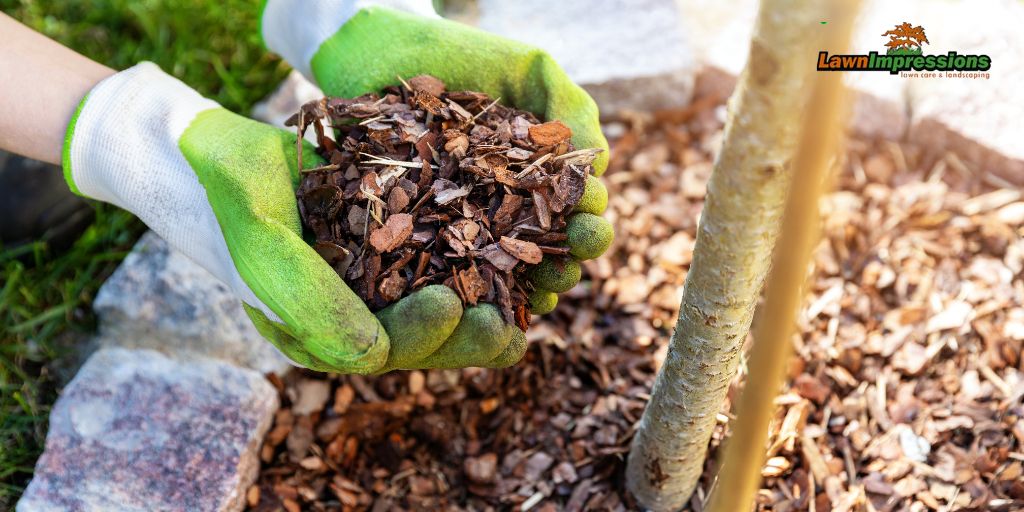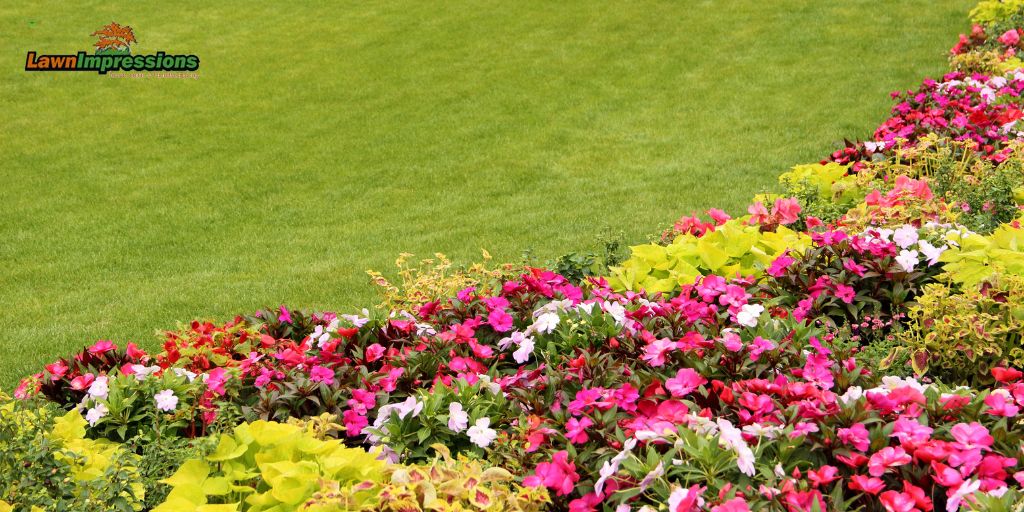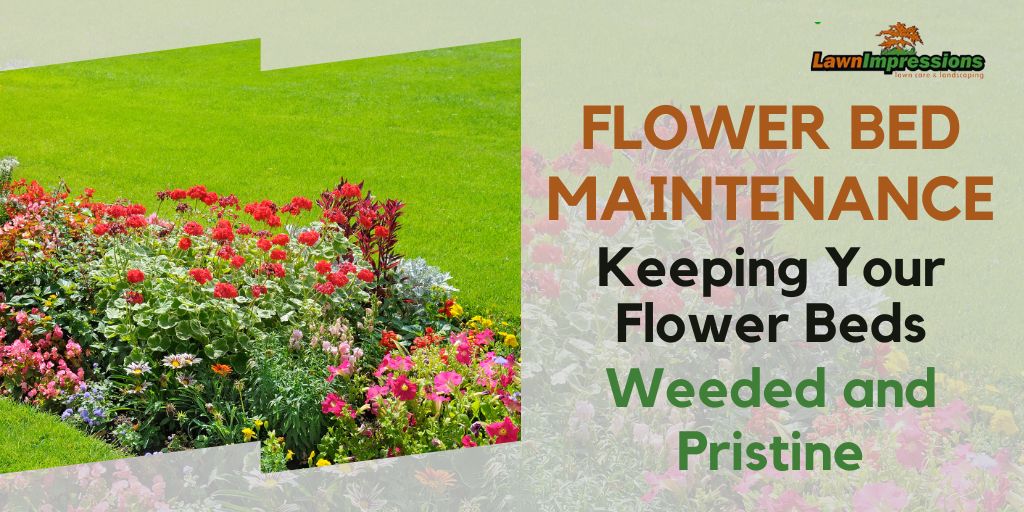Every gardener dreams of a colorful and tidy flower bed, but reality often looks very different. Weeds pop up overnight, plants fight for nutrients, and soil starts to lose its strength. When left unchecked, messy beds can make your whole yard look neglected and even hurt the health of your flowers. It’s frustrating when you’ve invested time and energy into your garden, only to see weeds take over and blooms fade faster than expected.
The good news is that flower bed maintenance doesn’t have to feel overwhelming. With a clear plan for weed control, soil care, and seasonal upkeep, you can keep your beds looking fresh and vibrant all year long. This guide will walk you through the essentials of keeping your flower beds weeded and pristine, giving you simple yet powerful tips to protect your investment and enjoy a garden that thrives in every season.
Table of Contents
- The Importance of Regular Flower Bed Maintenance
- Effective Weed Control Strategies for Flower Beds
- Soil Care and Nutrient Management
- Seasonal Flower Bed Maintenance Tips
- Keeping Flower Beds Looking Pristine Year-Round
- Building Beautiful Beds That Last
- Quick FAQs About Flower Bed Maintenance
The Importance of Regular Flower Bed Maintenance
Clean, well-kept beds enhance your home’s curb appeal and make outdoor spaces inviting. When you invest time into regular upkeep, you reduce the risk of pests, diseases, and overcrowding that often weaken flowers. Plus, a tidy bed makes it easier to spot problems early and fix them before they spread.
Another reason to stay consistent with flower bed maintenance is long-term savings. Neglected beds often require costly interventions like replacing dead plants, redoing soil, or applying heavy weed treatments. By handling small tasks regularly, you avoid bigger, more expensive fixes later. In other words, consistent care not only beautifies your garden but also saves you time, money, and stress in the long run.
🌷 Why a Clean Flower Bed Enhances Curb Appeal
A well-kept flower bed instantly boosts the appearance of your yard. Bright blooms framed by weed-free soil create a sense of order and beauty that neighbors and guests notice right away. Curb appeal also plays a role in property value, making maintenance an investment that pays off. Whether you plan to sell your home or simply enjoy it more, clean beds give your landscape a polished, welcoming look.
🌱 Preventing Weed Overgrowth and Plant Competition
Weeds compete fiercely with your flowers for sunlight, water, and nutrients. When left alone, they spread quickly and can choke out even the strongest plants. By removing weeds regularly, you give your flowers the space and resources they need to grow. Keeping weeds under control also prevents seeds from spreading to other parts of your yard, making the task easier over time.
🌞 Boosting Plant Health and Longevity
Healthy beds lead to longer-lasting blooms and stronger root systems. Regular maintenance ensures that soil stays fertile, weeds don’t overwhelm your plants, and flowers get the right balance of care. This approach allows your garden to thrive from season to season, instead of starting from scratch each year. Stronger plants also resist pests and diseases better, reducing the need for chemical treatments.
Effective Weed Control Strategies for Flower Beds
Weeds are the biggest enemy of any flower bed, but tackling them doesn’t have to be complicated. The key is to be proactive instead of reactive. By creating a simple system for weed control, you can drastically cut down on the time spent pulling them out. Techniques like mulching, seasonal timing, and smart use of herbicides all play a part in keeping weeds at bay.
It’s also important to choose a method that matches your garden style and personal values. Some gardeners prefer natural solutions like manual weeding, while others use safe herbicides to manage persistent invaders. No matter the approach, the goal remains the same: protect your flowers by making it harder for weeds to take root.
✋ Manual Weeding vs. Chemical Solutions
Manual weeding is the most natural approach, and it’s effective when done consistently. Pulling weeds by hand ensures you remove roots completely, preventing regrowth. On the other hand, chemical solutions offer a faster way to handle large infestations. The key is using targeted herbicides that won’t harm your flowers. A combination of both methods often works best, depending on the season and weed type.
🍂 Using Mulch as a Weed Barrier
Mulch is one of the most effective tools for keeping weeds under control. A thick layer of organic mulch—like bark or straw—blocks sunlight from reaching weed seeds, stopping them from sprouting. Mulch also helps the soil hold moisture and regulates temperature, which benefits your flowers. Refreshing mulch once or twice a year keeps the barrier strong and your beds looking neat.

⏳ Seasonal Timing for Weed Removal
Timing is everything when it comes to weed control. Pulling weeds right after rain makes the process easier since roots loosen in moist soil. Applying pre-emergent herbicides in spring prevents seeds from sprouting during peak growth. Staying ahead of weeds in early seasons saves you from dealing with larger, tougher problems later.
Quick weed control tips:
- Pull weeds after rain for easier removal.
- Apply pre-emergent herbicides before spring growth.
- Replenish mulch 1–2 times per year.
RELATED: Pre and Post Emergent Weed Control: Optimize Your Lawn’s Health This Spring
Soil Care and Nutrient Management
Healthy soil is the foundation of every thriving flower bed. Without proper nutrients and structure, even the strongest plants struggle to grow. Regular soil care ensures that roots can breathe, flowers can absorb nutrients, and your plants stay strong against stress. Knowing what your soil needs allows you to tailor your approach instead of guessing.
Soil management also helps balance long-term fertility. Over time, repeated planting can drain nutrients and lead to compacted soil. By testing, refreshing, and fertilizing, you restore balance and create the perfect growing environment. This not only boosts bloom quality but also helps maintain vibrant flower beds year after year.
🧪 Testing Soil for Balance and pH
Testing your soil is like running a health check for your garden. A simple test reveals nutrient levels and pH balance, showing what adjustments are needed. For example, acidic soil may need lime, while alkaline soil may benefit from sulfur. Regular testing ensures you give your plants exactly what they need instead of wasting money on unnecessary treatments.
💧 Choosing the Right Fertilizer
Different flowers have different nutritional needs. Balanced fertilizers provide essential nutrients like nitrogen, phosphorus, and potassium, but some plants may require specific blends. Choosing slow-release fertilizers can also keep nutrients available for longer periods. Always follow directions carefully to avoid over-fertilizing, which can burn plants or disrupt soil health.
RELATED: Lawn Fertilizer and Weed Control Strategies for Lawn Issues
🌾 Aerating and Refreshing Soil Regularly
Compacted soil suffocates roots and makes it harder for water and nutrients to penetrate. Aerating your soil—by gently loosening it—helps plants breathe and grow stronger. Adding compost or organic matter also restores fertility and improves soil texture. Refreshing soil regularly ensures that flower beds remain a healthy, nutrient-rich environment for your plants.
RELATED: Breathing Life into Your Lawn: The Spring Aeration Guide
Seasonal Flower Bed Maintenance Tips
Each season brings its own challenges for flower bed care. Knowing what to do during spring, summer, and fall keeps your garden thriving year-round. Seasonal maintenance not only ensures beauty but also protects your flowers from weather changes and pests. By preparing for each season in advance, you set your beds up for success.
The secret to seasonal care is consistency. Instead of scrambling to fix problems, you’ll already have a routine in place that keeps everything balanced. With a few simple steps each season, your garden will remain lively and healthy no matter the weather.
🌸 Spring Preparation for Planting Success
Spring is the season of renewal, making it the perfect time to clean and prepare your beds. Removing winter debris, edging the borders, and testing soil sets a strong foundation for planting. Adding compost or mulch early ensures your flowers start with a nutrient-rich environment. Spring prep is all about creating the best conditions for new growth.
RELATED: Spring Lawn Care Tips For NC and SC Homeowners
☀️ Summer Watering and Mulching Practices
Hot summer months can quickly stress plants if they don’t get enough water. Deep watering, rather than light sprinkling, ensures roots grow deeper and stronger. Mulching during summer keeps soil cool and moist, reducing the need for constant watering. By combining these practices, you protect your flowers from heat stress and maintain a lush, vibrant garden.
RELATED: Summer Lawn Care Tips For NC and SC Homeowners
🍁 Fall and Winter Clean-Up
As the growing season ends, fall clean-up prepares your beds for rest. Removing dead plants, trimming perennials, and adding compost enriches the soil for next spring. In colder climates, insulating soil with mulch or coverings helps protect roots from frost. Winter maintenance ensures your garden survives the cold and returns stronger in spring.
Seasonal checklist:
- Spring: Remove winter debris, test soil, plant annuals.
- Summer: Deep watering, monitor pests, refresh mulch.
- Fall/Winter: Prune, add compost, insulate soil.

Keeping Flower Beds Looking Pristine Year-Round
Consistency is what separates tidy flower beds from messy ones. Instead of waiting for problems, set up a simple routine that covers watering, weeding, and soil checks. Regular edging and plant choices also make a big difference in reducing effort while keeping beds looking fresh. The key is to create habits that are easy to follow all year long.
RELATED: Watering Best Practices: How to Water Your Lawn Effectively
Another way to keep things simple is by designing low-maintenance beds. Choosing the right plants and adding protective features saves time while keeping your garden beautiful. With just a little planning, you can enjoy a stunning yard without spending every weekend pulling weeds.
✂️ The Role of Edging and Borders
Edging defines the lines of your flower beds and makes them look clean. Borders keep grass and weeds from creeping in, reducing maintenance. Edging can be done with bricks, stones, or simple plastic liners, depending on your style. It’s a small step that makes a huge difference in keeping beds neat and organized.
🌼 Incorporating Low-Maintenance Plants
Not every flower bed has to be high-effort. Using perennials and native plants reduces the amount of care needed while still creating vibrant color. These plants are naturally adapted to your climate and require less water and fertilizer. Adding them to your beds makes upkeep easier while still keeping your garden lively and full of blooms.
📅 Consistency and Scheduling Routine Care
The easiest way to stay on top of maintenance is with a schedule. Mark down weekly weeding, monthly soil checks, and seasonal clean-ups to avoid falling behind. Even just 15–20 minutes a week can prevent small problems from growing into big ones. Consistency is the secret ingredient that keeps flower beds weeded and pristine year-round.
Building Beautiful Beds That Last
Flower bed maintenance may seem like an endless task, but it’s actually the key to enjoying a vibrant, long-lasting garden. By combining weed control, soil care, and seasonal upkeep, you create an environment where flowers can thrive without constant struggles. A clean, healthy bed enhances your home’s beauty while reducing stress and costs in the long run.
Consistency is what makes the biggest difference. With small, regular actions, you can prevent weeds, improve soil, and keep flowers blooming season after season. Each step builds on the last, turning your garden into a source of pride instead of frustration. Remember, a little attention now saves a lot of work later.
Give your lawn the care it deserves—let Lawn Impressions create a landscape you’ll love coming home to.”
Start with flower bed maintenance: keeping your flower beds weeded and pristine is the first step toward a healthier, more beautiful yard. From edging and mulching to seasonal upkeep, our team at Lawn Impressions is here to help you enjoy a yard that’s vibrant, clean, and stress-free.
👉 Contact us at 704-733-9699 or via our website and let’s create beautiful lawns that will make lasting impressions.
Turn your garden into a showpiece—start with clean, healthy flower beds!
Our Services Include:
Quick FAQs About Flower Bed Maintenance
1. How often should I weed my flower beds?
You should aim to weed your flower beds at least once a week. Regular weeding prevents invasive plants from spreading and competing with your flowers for sunlight, water, and nutrients. Staying consistent makes the task easier and keeps your garden looking neat.
2. What is the best mulch for flower bed maintenance?
Organic mulch, such as shredded bark, straw, or wood chips, works best for flower beds. It not only suppresses weeds but also improves soil moisture and temperature. Refreshing mulch once or twice a year will keep your flower beds weeded and pristine.
3. Can I use chemical weed killers in flower beds safely?
Yes, but always choose a selective herbicide that targets weeds without harming your flowers. Apply carefully, following label directions, and avoid spraying on windy days. Many gardeners combine safe chemical use with manual weeding for best results.
YOU’LL ALSO LIKE:

